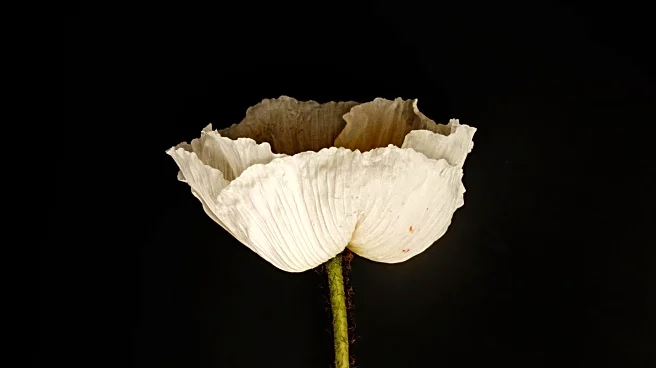What's Happening?
Myriam Gurba's new book, 'Poppy State: A Labyrinth of Plants and a Story of Beginnings,' delves into the history and cultural significance of the California poppy. Gurba reflects on her personal connection to the poppy, recalling childhood memories of studying
wildflowers during family meals. The book also explores the efforts of Sara Allen Plummer Lemmon, who lobbied for the golden poppy to become California's official state flower. Gurba's narrative intertwines botanical history with personal anecdotes, offering a unique perspective on the poppy's role in California's cultural landscape.
Why It's Important?
Gurba's exploration of the California poppy highlights the intersection of botany and cultural identity, emphasizing the importance of native plants in shaping regional heritage. The book contributes to a broader understanding of how flora can influence cultural narratives and personal identities. By revisiting historical figures like Sara Lemmon, Gurba sheds light on the contributions of women in the field of botany and their impact on state symbols. This work encourages readers to appreciate the natural world and its role in cultural storytelling.
What's Next?
Gurba is currently working on her next project, 'Fifteen Latinas,' which aims to present an anarchic popular history of Latin America through the stories of women. This upcoming work promises to continue Gurba's exploration of cultural narratives and historical figures, potentially offering new insights into the contributions of Latinas in shaping Latin American history. Readers and scholars interested in cultural studies and botany may anticipate further discussions and analyses inspired by Gurba's work.
Beyond the Headlines
Gurba's narrative raises questions about the representation of indigenous peoples and plants in historical accounts. The adjectives used by historical figures like Sara Lemmon to describe native people reflect broader issues of cultural bias and the need for more inclusive narratives. Gurba's work challenges readers to reconsider historical perspectives and the language used to describe cultural and botanical subjects, advocating for a more respectful and accurate portrayal.
















